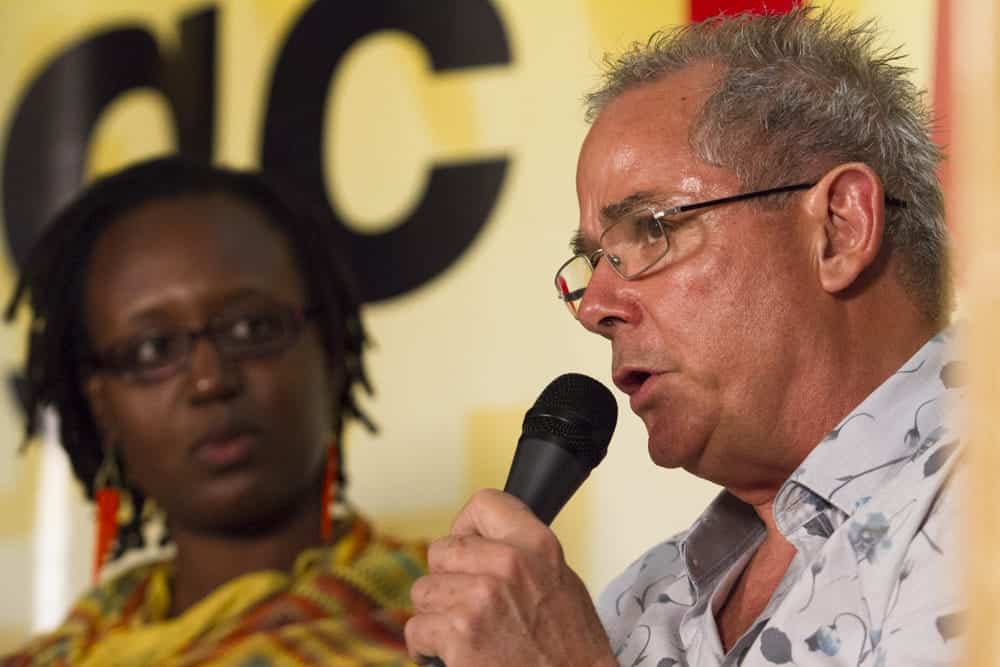by Shivanee Ramlochan, 2013 NGC Bocas Lit Fest Blogger.
The driving question that prompted novelist Lawrence Scott towards writing Light Falling on Bamboo was this: “What was Michel-Jean Cazabon’s life like?” From this seemingly simple interrogation, particular threads of an autobiographical influence can be discerned. The novel, which was longlisted for the 2013 OCM Bocas Prize for Caribbean Literature, is about an artist trying to make his way in the Caribbean, the land of his birth that is, at the same time, new terrain to the artist in several ways.
This was among the several revelations shared by Scott, during his April 27th fiction panel with Oonya Kempadoo, chaired by Trinidadian writer Alake Pilgrim. Answering the same question of motivations, Kempadoo, discussing her recently-released novel, All Decent Animals, described the novel as a protagonist’s attempt to come to terms with creativity, and the forms in which it comes. Kempadoo added that the novel seeks to engage with the question of how people deal with difficult emotional positions, such as terminal illness — how do we grapple with the hard and ugly times we don’t want to face?

Addressing Pilgrim’s question of Cazabon’s simultaneous reflection and rejection of his class privilege, Scott drew on the beauty for which the artist’s work has repeatedly been lauded. If one looks deeper than the surface aesthetics of these landscapes and portraits, Scott said, one sees that what lies beneath cannot itself be oppressed, and that Cazabon was painting this, too: the oppression of the 19th century, the cruelty of the time.

How does one work and create in a place like Trinidad, a land of so many contradictions? In answering this query, Kempadoo related that wherever someone is, a connection of uncomfortable journeys embedded in the landscape may persist. Into this milieu, the reflection and interrogation of formal and informal art unfolds — making every destination a map marker of a place where questing can happen, of where the purpose of one’s life may be defined. Carnival, Kempadoo said, was of great importance to her in the new novel, because it is, in her estimation, the indigenous art form of Trinidad. Noting resonances with this and his work, Scott added that carnival’s position in Trinidadian society creates a complex relationship. It gives rise to a struggle that Cazabon himself experienced with culture in his own time.
Set in distinct time periods of Trinidad’s development, these novels of Scott and Kempadoo are no less that impressive textual portraiture: they present (and represent) faces of Trinidad that are both persistent and crumbling, affected by time, development and remembrance.
Photographs by Maria Nunes, Official Festival Photographer.